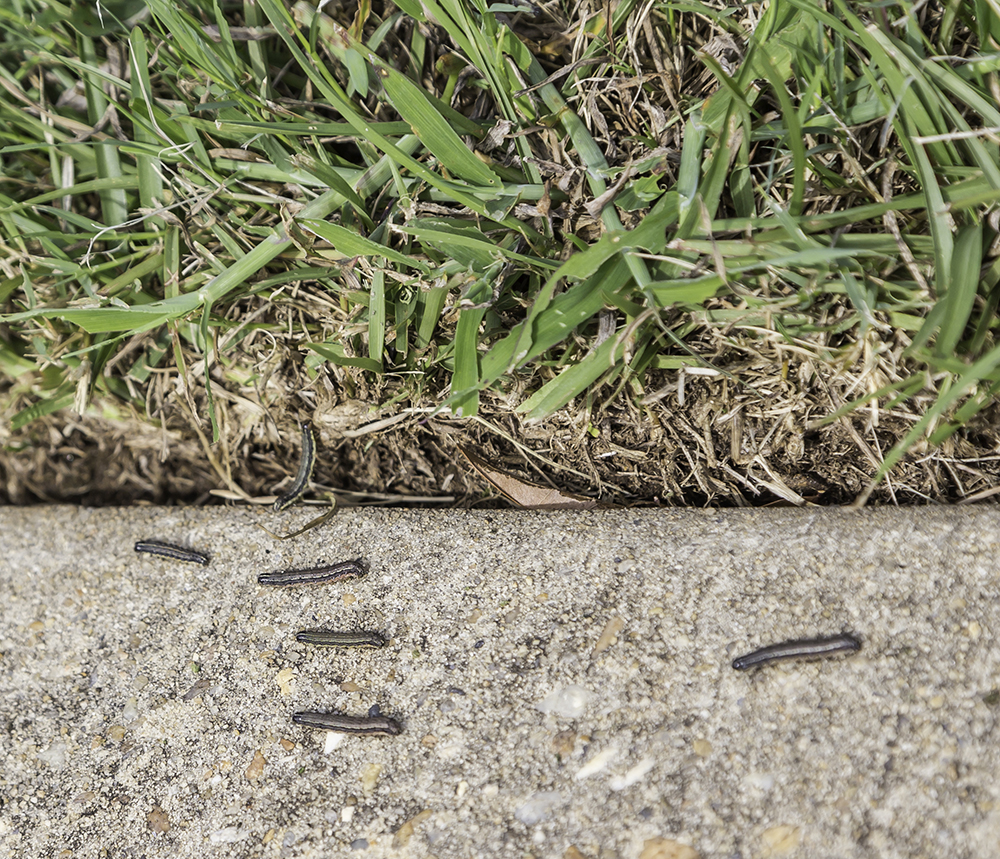When you see the word "army," it's usually because of some type of ground troops. But in this case, we're talking about an insect that can sway public opinion and wreak havoc with your property—the fall armyworm! It's not surprising why they're called "army" worms; this group is known for its intense wars against residential lawns due mostly in part because they can fly or crawl at incredible speeds when threatened by an enemy confrontation (or even if it isn't).
What are Armyworms?
Fall armyworms are destructive pests that eat the leaves of many types of plants, especially when you're trying to grow turf grasses such as Bermuda or Fescue. While they eventually become moths with wings in order for them to live through wintertime (while their larvae stage survives on a caterpillar), these worm-like creatures can cause significant damage before this happens!
The caterpillar stage of armyworms is typically 1.5 to 2 inches long, with heads with an inverted "Y" marking on their body and green/yellow/red stripes down its sides or back (depending on the color).
An armyworm moth lays her eggs in the grass, and they will hatch after 2 to 3 weeks. The larvae live just under Earth's surface, between root systems as well as thatch layers during this time frame--an average female could lay up 1,000 eggs at once!
The unpredictable nature of fall armyworm infestations means that they can cause significant damage at any time. However, there is a correlation between when these pests are more active and rainfall in August and September.
Signs of Armyworm Damage
Over the years, armyworm damage has been one of the most unnoticed pests in agriculture. When larvae hatch from their eggs and start eating through your grass blades, it can be challenging to see what's happening without looking for brown patches on topsoil or dead areas the next time you mow!
One of the first signs that you have fall armyworm damage is brown patches throughout your lawn. The larvae eat through blades, leaving large areas with crisp edges in their wake. This could be mistaken for heat or even drought! As they methodically continue to feed daily, these dead zones grow larger until finally moving on towards other parts.
Looking closer at the grass blades around your yard can be tough to tell if they're being chewed or torn. But move into more sterile environments where little else grows, and those same edges are clear as day-the plants have been cut right off their surface!
Where are fall armyworms most Common?
Fall armyworm eggs are typically found on new sod. They hatch after the lawn is laid. Their growth causes an infestation as they eat away at your grass, eventually leaving brown patches that appear to have been chewed up by worms - only affecting leaves above ground level because these pests want just green parts of plants!
Which season are armyworms worse?
As stated earlier, armyworms are unpredictable; thus, no one can be certain of the month or year that they will be worse. Armyworms generation evolves every six weeks, and sometimes the moths fly 60 miles with the wind. This means that armyworm pressure can vary from year-to-year depending on which way their flight paths take them! Some years there are only sporadic incidences of damage, while others bring much more severe outbreaks than expected for some regions.
How can armyworm damage be controlled and prevented?
Armyworms are hard to control because they like hiding out during the day and coming out at night. They feed quickly, so catching them early is critical before it's too late, but getting rid of this pest can be tricky without an expert on hand! Chemical pesticides can be very effective, but they should not replace professional advice on controlling them. The most reliable way of dealing with them is to treat your lawn if your neighbor's is attacked.

